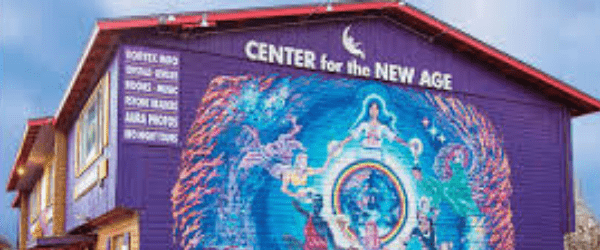
14 Oct The Rise of the New Religions
The independent spirits of Californians were more open than most to the metaphysical and inward-focused religions immigrating from the East, both the East Coast of the U.S. and the Eastern Hemisphere. Traditional religions still spoke to the majority of Angelenos, yet a growing number felt a greater affinity with the new religions such as New Thought, Christian Science, Theosophy, Religious Science, and the loosely-affiliated zeitgeist formerly referred to as “New Age.” In time, these sects grew to be more popular here than in their places of origin.
The new religions, however, were primarily middle to upper-middle class educated white people, and did not necessarily lead to relationships with Latino, African American, Jewish, Native American, or Asian neighbors. Although the new religions speak to being open to all, the reality is that the memberships are highly homogeneous except for a few welcome and popular examples such as Agape International Spiritual Center.
New Thought Movement
An umbrella term for a group of religions including Religious Science, Divine Science, Unity Church, and much of the self-help movement. Their beliefs include positive thinking, the law of attraction (first written about in 1906), personal power, creative visualization, that divinity is inside each person, and that our minds create our reality.
Religious Science is actually a Spiritual L.A. hybrid developed by Ernest Holmes, author of The Science of Mind .
New Age Movement
Although not really a movement, and not really about the “new age,” the number of people considering themselves to be “spiritual but not religious” is one of the fastest-growing trends in American culture. Since the 1970s, what we might term Mind-Body-Spirit has become increasingly visible in the specialized bookstores, yoga studios, crystals, restaurants, magazines, and gift shops (looking surprisingly like high-priced botanicas – see page xxx), and audibly in the type of music played for massage and in yoga classes becoming the New Age category for the Grammys.
The spirituality is highly individualistic, with each person’s experiences being the source of authority. It is often a mixture of wherever the individual’s search has taken them: Eastern religions, the counterculture of the 60s, alternative medicine and holistic health, modern Paganism, Western Esotericism, Carl Jung, UFOs, and the Human Potential Movement. There is generally a belief in divinity, although that definition is again, individual. The central tenet seems to be that each must cultivate one’s own divine potential.
Although many might say the epicenter of this movement is Esalen Institute in Northern California, anyone who has spent time in Santa Monica would have to agree: It wears the New Age crown.
© 2020 Catherine Auman
This is an excerpt from Catherine Auman’s book Guide to Spiritual L.A.: The Irreverent, the Awake, and the True


Sorry, the comment form is closed at this time.